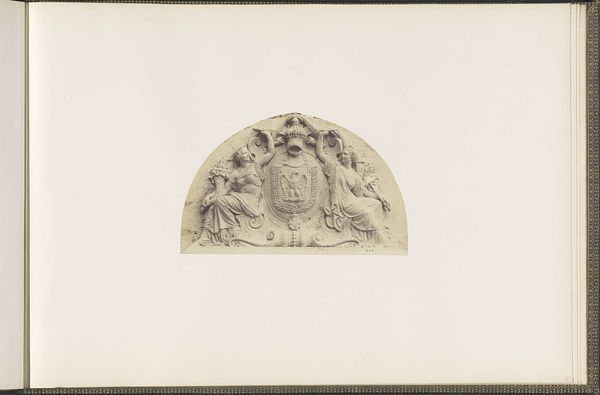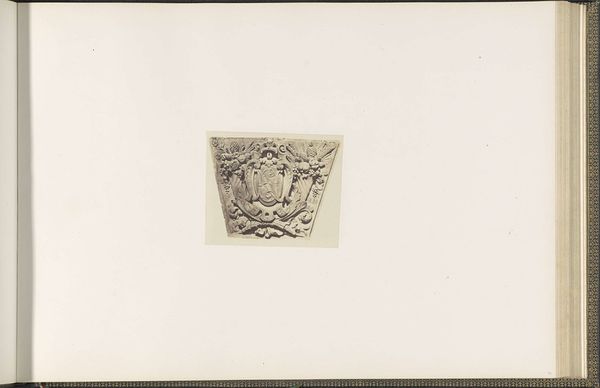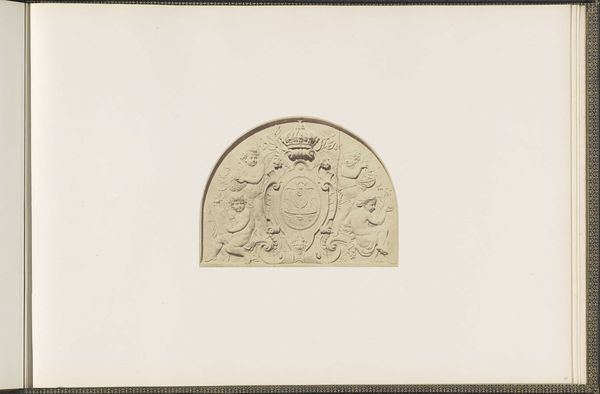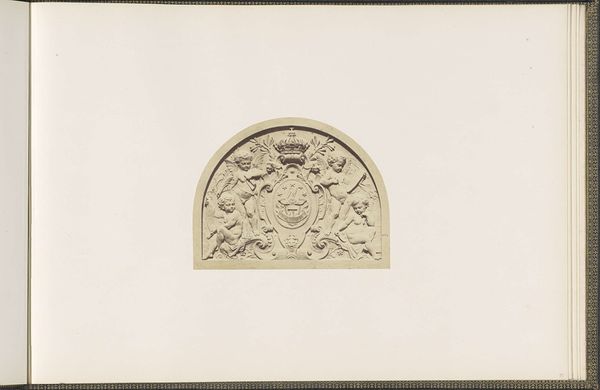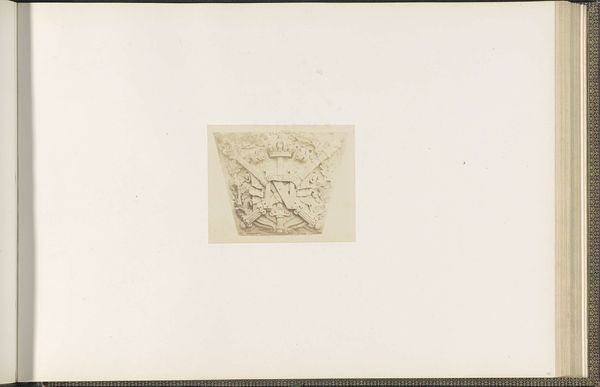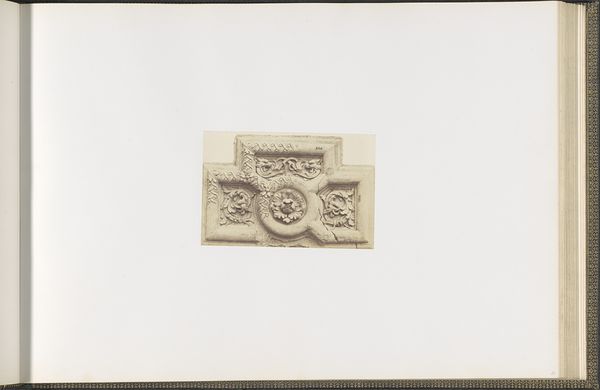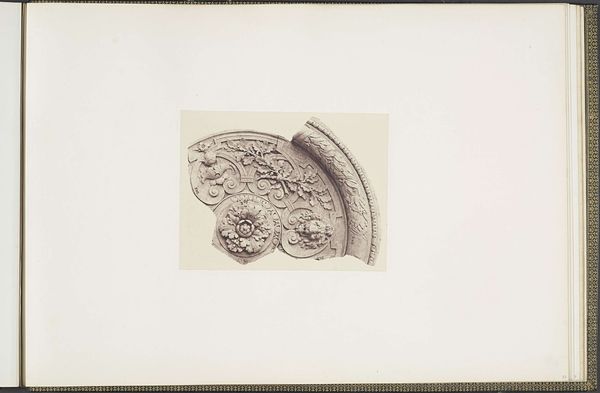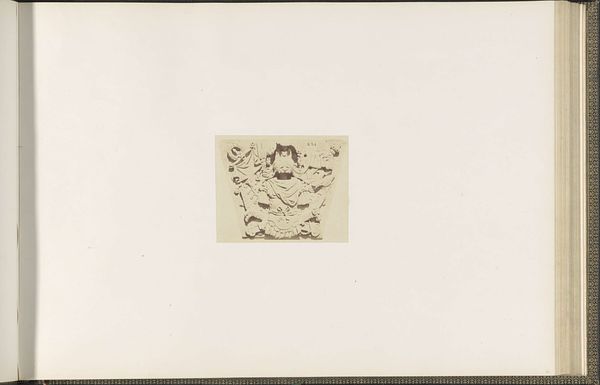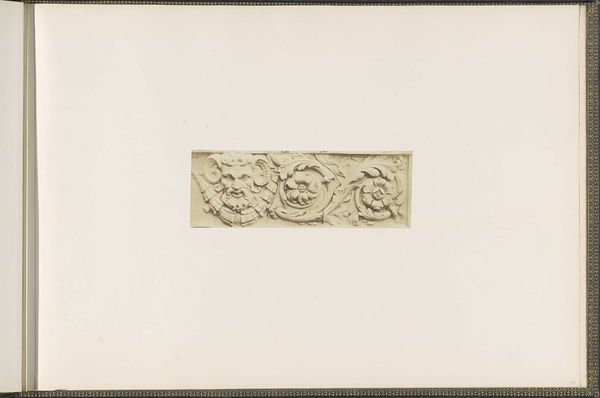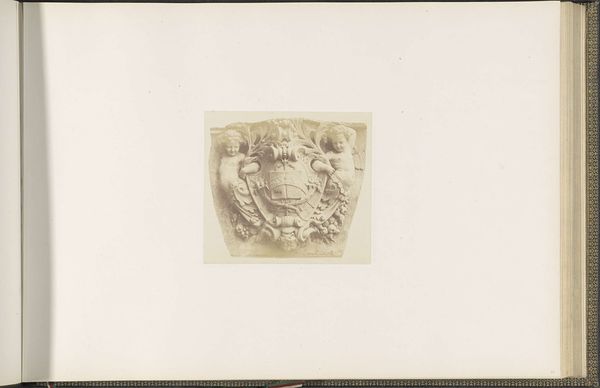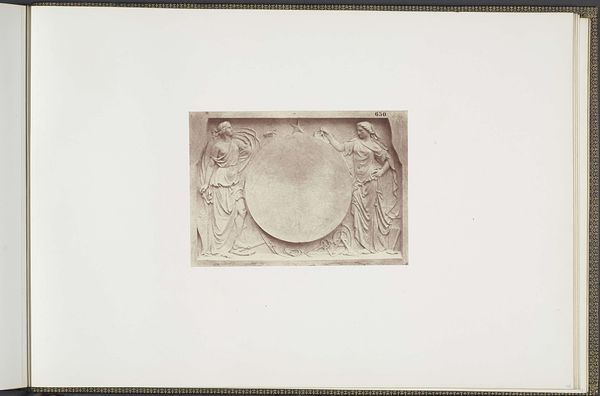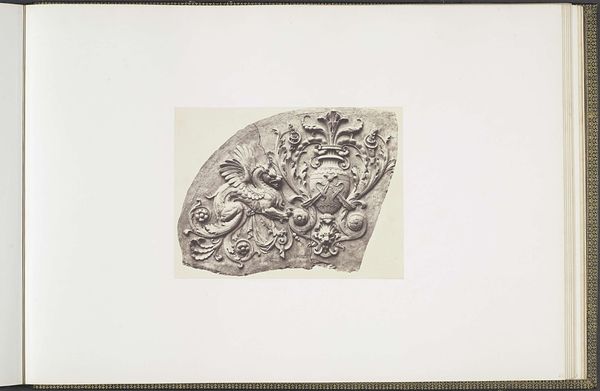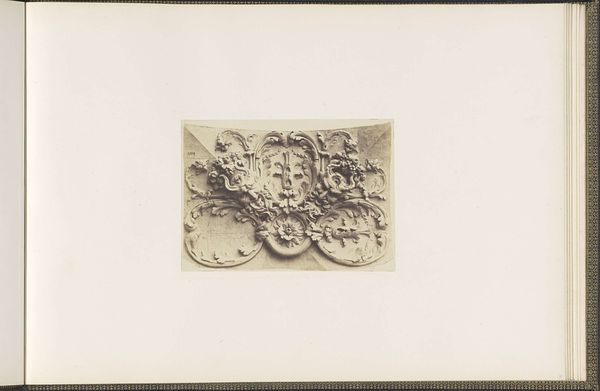
Gipsmodel voor beeldhouwwerk op het Palais du Louvre: "L'Industrie" door Jean-Baptiste Revillon c. 1855 - 1857
0:00
0:00
relief, sculpture, plaster
#
neoclacissism
#
relief
#
sculpture
#
plaster
#
history-painting
#
academic-art
Dimensions: height 376 mm, width 523 mm
Copyright: Rijks Museum: Open Domain
Curator: What a striking piece. This is the plaster model for a sculpture intended for the Louvre Palace, entitled "L'Industrie" by Jean-Baptiste Revillon, created circa 1855-1857. It's currently held at the Rijksmuseum. Editor: My first impression is that it's surprisingly delicate. The cherubic figures contrast with the implied grandeur of the Louvre and the concept of "Industry." The color makes it also look like some vintage fossil from the pre-industrial age. Curator: The material, plaster, adds to that sense of delicate impermanence, doesn't it? Considering its intended location, the sculpture highlights the rising importance of industry within the framework of state-sponsored art during the Second Empire. It's not merely decorative; it's a statement. Editor: A statement about progress and power, perhaps, but told through a classical lens? Those putti feel like an echo of earlier aristocratic commissions, not necessarily a celebration of the working classes who fueled industrial progress. Curator: Precisely. We're looking at Neoclassicism employed as a visual language of legitimacy. By aligning "industry" with established artistic conventions, the regime sought to connect new economic realities to a historical narrative of greatness and to reassure the masses who will always feel like outcasts within their societies. Editor: And in doing so, maybe sanitizing some of the harsh realities of industrialization? It’s a carefully constructed image. Those supporting figures could be more representative, of the people really involved in manufacturing—their social roles and their cultural value and even race. But what do we see represented? Whiteness and privilege, an old, unrepresentative narrative of labor in France. Curator: Absolutely. This piece reveals how official art served as a tool for constructing a specific national identity and solidifying social hierarchies. The imagery aims to project prosperity, progress, and stability – values that reinforce the status quo. Editor: It gives us something to unpack about whose stories are told, how they're told, and most importantly, for whose benefit. A deeper meaning arises about accessibility of all roles to all levels of social tiers. Curator: This work encourages to examine how societal power relations played out, through official commissions. Editor: Right. It calls to ask what industry truly means, and who gets to define its legacy.
Comments
No comments
Be the first to comment and join the conversation on the ultimate creative platform.
